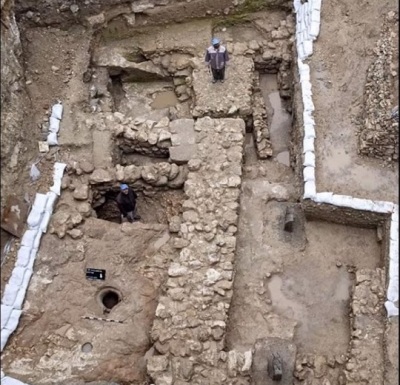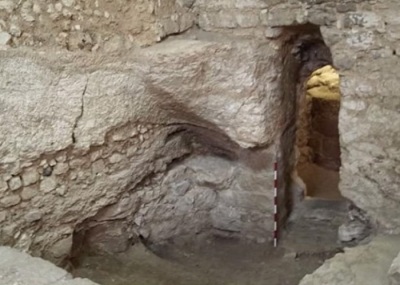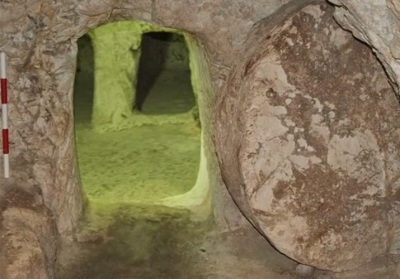Jesus' boyhood home discovered?

NAZARETH, Israel (Christian Examiner) – The well-preserved remains of a stone home in northern Israel match the description and location of Jesus' boyhood home found in a seventh-century document about a monk's pilgrimage to the Holy Land.
"De Locis Sanctis," roughly translated "Of Holy Places," by an Irish abbot based on another monk's travels, claims to have identified Jesus' house around 670 A.D. in Nazareth. The description included structural features and gave the location as between two tombs and below a church.
Archaeologist Ken Dark, who has been researching the ruins since 2006, now says the remains and the place of the structure he is studying match what was recorded in the ancient document as the home where Joseph and Mary lived.
The first-century "courtyard house" was dug out from rock in the hillside and had rock-built walls, and some doorways and window openings still are intact. The larger survey site includes tombs, a cistern and a Byzantine church.

Dark, who is leading the work on the dig, said evidence pointed to a first century dating of the structure and there is "no good reason" to discount it as Jesus' home.
He published some of his findings in the latest issue of the Biblical Archaeological Review.
"Although known since the 1880s, this [information] had never previously been properly published or even studied by professional archaeologists, until the Nazareth Archaeological Project began work here," he wrote in the BAR.
"The story begins with the chance discovery of an ancient cistern in the 1880s, shortly after the convent was built," Dark shared. "Excavations were then undertaken by the nuns, their workmen and even children from their school.

"They exposed a complex sequence of unusually well-preserved archaeology features, including Crusader-period walls and vaults, [and] a Byzantine cave church," he continued. Later construction of the convent buildings revealed "walls of a large Byzantine church with a triple apse, polychrome mosaic floors and white marble fittings rebuilt in the Crusader period."
He also said the town of Nazareth was apparently larger and wealthier than previously thought, and unlike a nearby town, contains few (if any) trappings that would indicate Greek or Roman influence.
"This suggests that the Nazareth area was unusual for the strength of its anti-Roman sentiment and/or the strength of its Jewish identity," Dark wrote. "The evidence suggests that Jesus' boyhood was spent in a conservative Jewish community that has little contact with Hellenistic or Roman culture."
Dark, who is associate professor of biblical interpretation at the New Orleans Baptist Theological Seminary, told Christian Examiner "it is impossible to say on archaeological grounds" whether this indeed is the home of Jesus. There is some evidence from Church history that such a house did exist, he said, but further work will need to be done to say that the present location in Nazareth is indeed that place.
OTHER CONTENT:
Top Republicans: Legalizing gay marriage is the 'conservative' thing to do